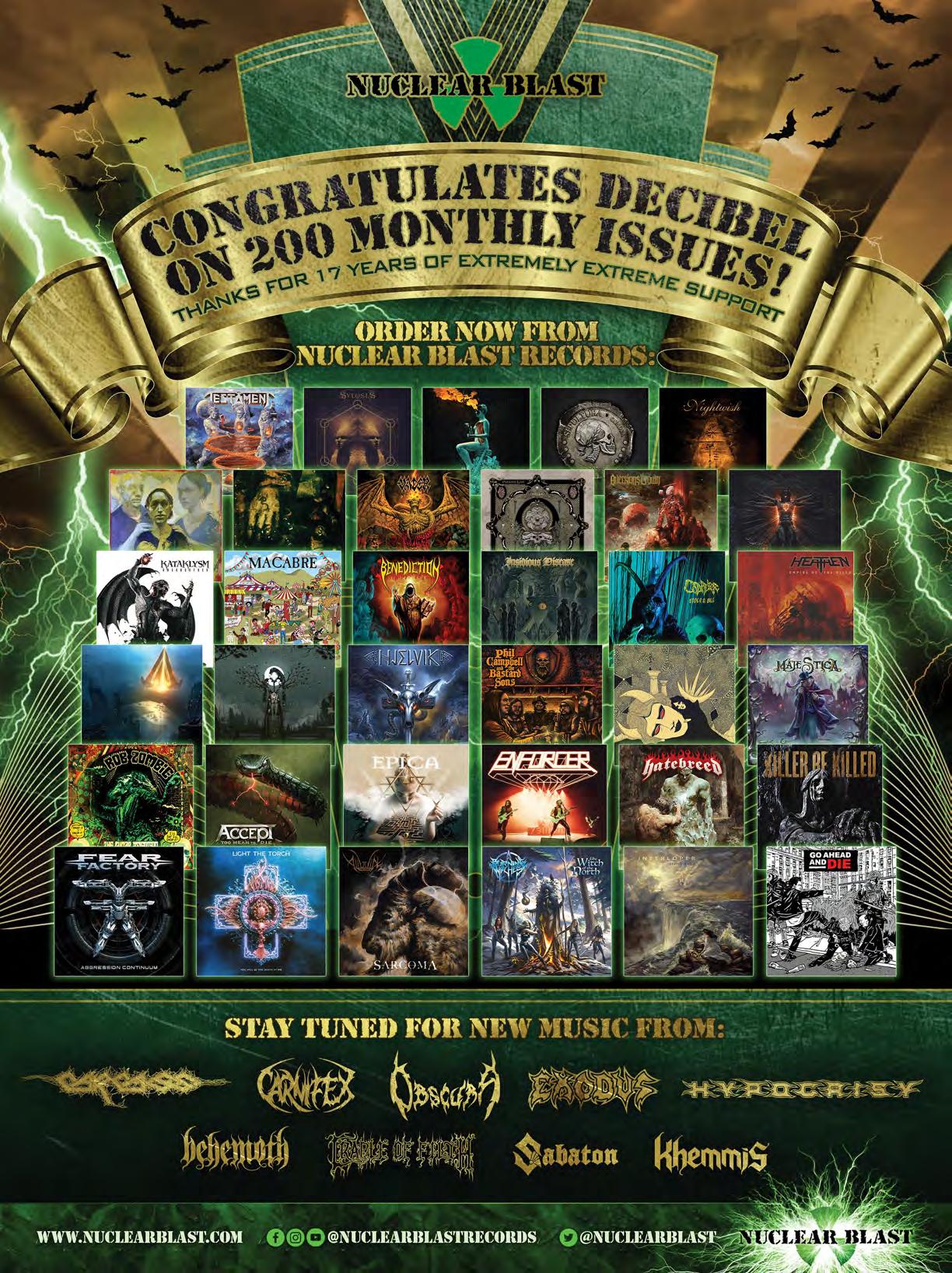
2 minute read
grave miasma
Extant U.K. death metal trio returns bearing a new classic
Abyss of wrathful deities, the sophomore album from London-based death metal now-three-piece Grave Miasma, comes after five years of relative silence, as well as a significant change in personnel. “We were dealt a heavy blow with our guitarist R—who’d been with us since the beginning in 2002—retiring from active band service,” writes D, who’s drummed for Grave Miasma since the beginning and before, back when the English extremists went by Goat Molestör. ¶ D explains how T, Grave Miasma’s bassist since 2016, subsequently “switched to lead guitar and recorded all bass parts.” Meanwhile, R, who quit in 2019, nevertheless found himself at Orgone Studios, where his former band was recording once again with producer Jaime Gomez Arellano, “for one day,” D adds, “to lay down some charismatic guitar parts.” ¶ For D, T and Y (the latter being Grave Miasma’s vocalist, guitarist, sitarist, oudist and Hammond organist), moving forward as a trio meant perseverance and patience. What else could they do, considering what they were working on? According to Y, the other remaining original member since the early days, “The first ideas [for Abyss of Wrathful Deities] were recorded in 2016, which evolved into the closing track ‘Kingdoms Beyond Kailash.’
What we have recorded is our most dynamic and varied album yet, which is testament to the allconsuming contributions from all members, including R before his departure in 2019.”
Abyss of Wrathful Deities, Y goes on to explain, “is an allusion to the Tibetan Bardo Thodl text, which outlines Wrathful Deities as both protectors and destructors. The abyss signifies the intermediate Bardo states between death and rebirth, where these deities are encountered as visions. The fierce deities of death can be seen as allies, if one has engaged in this work.”
If you’ve seen the grisly and intensely awesome music video for “Rogyapa,” the second track and lead single from Abyss, you already have an idea of the forces driving Grave Miasma’s sophomore album. “Music television was a primary source for escapism in the late ’80s through the late ’90s, for both Y and myself,” D remembers, “and with ‘Rogyapa,’ it felt like there was an opportunity to present the band visually in this format for the first time,” In the video, the band’s “live” performance is juxtaposed alongside graphic footage of the Tibetan sky burial practice in action. The ritualistic death metal energy works intoxicatingly well alongside the frenzied, swarming vultures and the unflinching ceremonial rites.
“The footage is publicly available, and was manipulated further by the Morbid Angle Productions lads,” Y notes. “It is certainly an aim to witness a ceremony in person someday!”
Lesser bands have come and gone in the lacuna between Grave Miasma’s last and latest releases, but Abyss of Wrathful Deities is finally upon us despite numerous setbacks, pandemic notwithstanding.
As ever, the genre-definers remain unfazed. “We neither expedited or delayed the recording and release of [Abyss],” D says, before adding hopefully, “but may it coincide with a renewed fervor in the worship of metal and death, amidst the wanton abandon of chaotic











